Happy Easter 2012 – Guy Wire ‘Eggs’
06 April 2012
![]() It has been almost a year since I started Peachridge Glass. I remember one of my first posts was for Easter 2011 (Read Happy Easter – CD 700 Egg Insulators). I wanted to see tonight if any new CD 700 ‘Egg’ insulators had surfaced on-line but did see anything new. I did however find some really cool, glass Guy Wire ‘Eggs’.
It has been almost a year since I started Peachridge Glass. I remember one of my first posts was for Easter 2011 (Read Happy Easter – CD 700 Egg Insulators). I wanted to see tonight if any new CD 700 ‘Egg’ insulators had surfaced on-line but did see anything new. I did however find some really cool, glass Guy Wire ‘Eggs’.
Guy wire strains are used to break the conductivity of a guy wire. They are placed in-line in the guy wire; the two ends of the wire are threaded through each other’s eyes with the strain in between, held in compression, so that if the strain were to break, the guy wire would still hold, albeit without insulation.
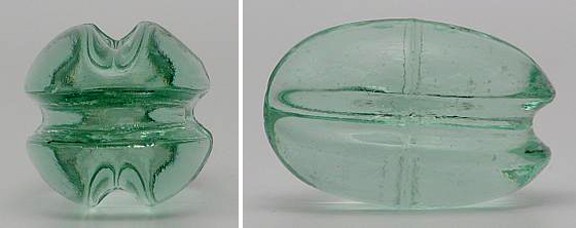
Very rare egg-style, only one known. This has been in a hobby for many years and is thought to be American, but there is no proof. As with all eggs, the two mold halves are clamped together and the glass poured through a port in the side; the glass is then broken off, and remaining stub is ground flush; hence overall dimensions do not vary.
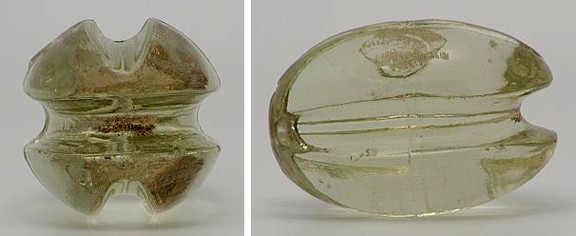
Another very rare egg, one of two known in this style (both straw). Also known in the hobby for many years, and thought to be American, perhaps a West Coast glass company– the straw color is reminiscent of Maydwell.
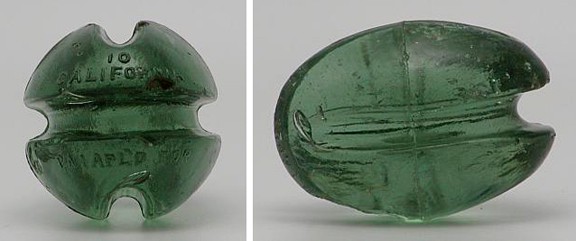
Smaller of the two California (C.G.I.) strains. This uncommon egg is embossed at one end, on the top lip “10” (the factory style number) above “CALIFORNIA”, and on the bottom lip “PAT APL’D FOR”. Like all eggs, it has a large round grind mark at the pouring port. Comes in sage green only.
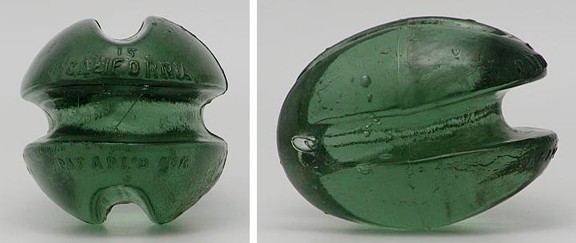
Larger of the two California (C.G.I.) strains. Also embossed at one end, on the top lip “15” (the factory style number) above “CALIFORNIA”, and on the bottom lip “PAT APL’D FOR”. Both egg styles are about equally uncommon. Like all eggs, it has a large round grind mark at the pouring port. Comes in sage green (left), smoke, SCA and yellow.
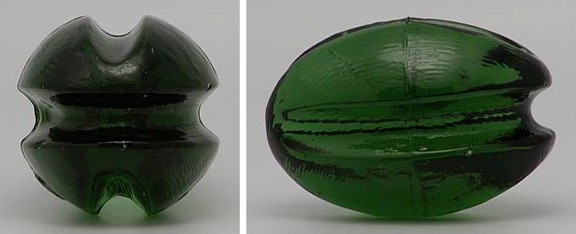
With the nicest color of all strain insulators, meet the unembossed Folembray egg, in the characteristic factory color, a rich dark yellow-green– se bon! There are dozens of these in the hobby, many introduced by Bernie Warren, who excavated them from a canal in xxx in yyy (see the Crown Jewels story, xxx yyy).

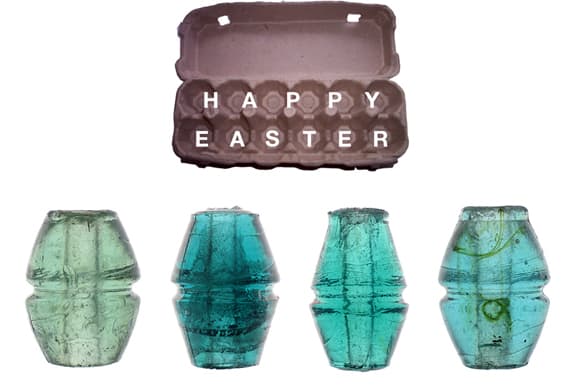
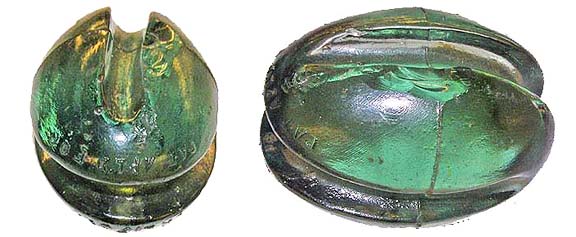









Wow! Very interesting and colorful antique glass items that I previously knew nothing about. Has it really been less than a year since you started Peachridge Glass?!!! It’s hard to remember a time when my after-work-day didn’t start with checking the latest postings on P.G. Congratulations to you and Elizabeth…and thanks!!!
Thanks Mike. Really appreciate your support.
I replied on your FB page. I also dug an amber threadless egg right here in “Sackamenna”. Didn’t see the rest of this on the other post.
Mike…why ‘California’ on so many of these eggs? Who made them? Any idea?
Ferdinand…the guy wire “eggs” embossed with California were manufactured by the California Glass Insulator Company of Long Beach, CA, sometime during their business years of 1912-1916. They have been found in purple, sage green and yellow.
Of course the CD 700 & 700.1 Western eggs pictured at the top are much earlier and most likely associated with early San Francisco glass production, possibly as early as the late 1860s.